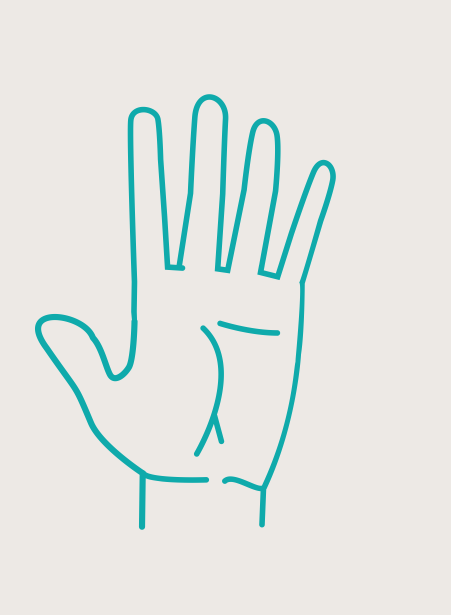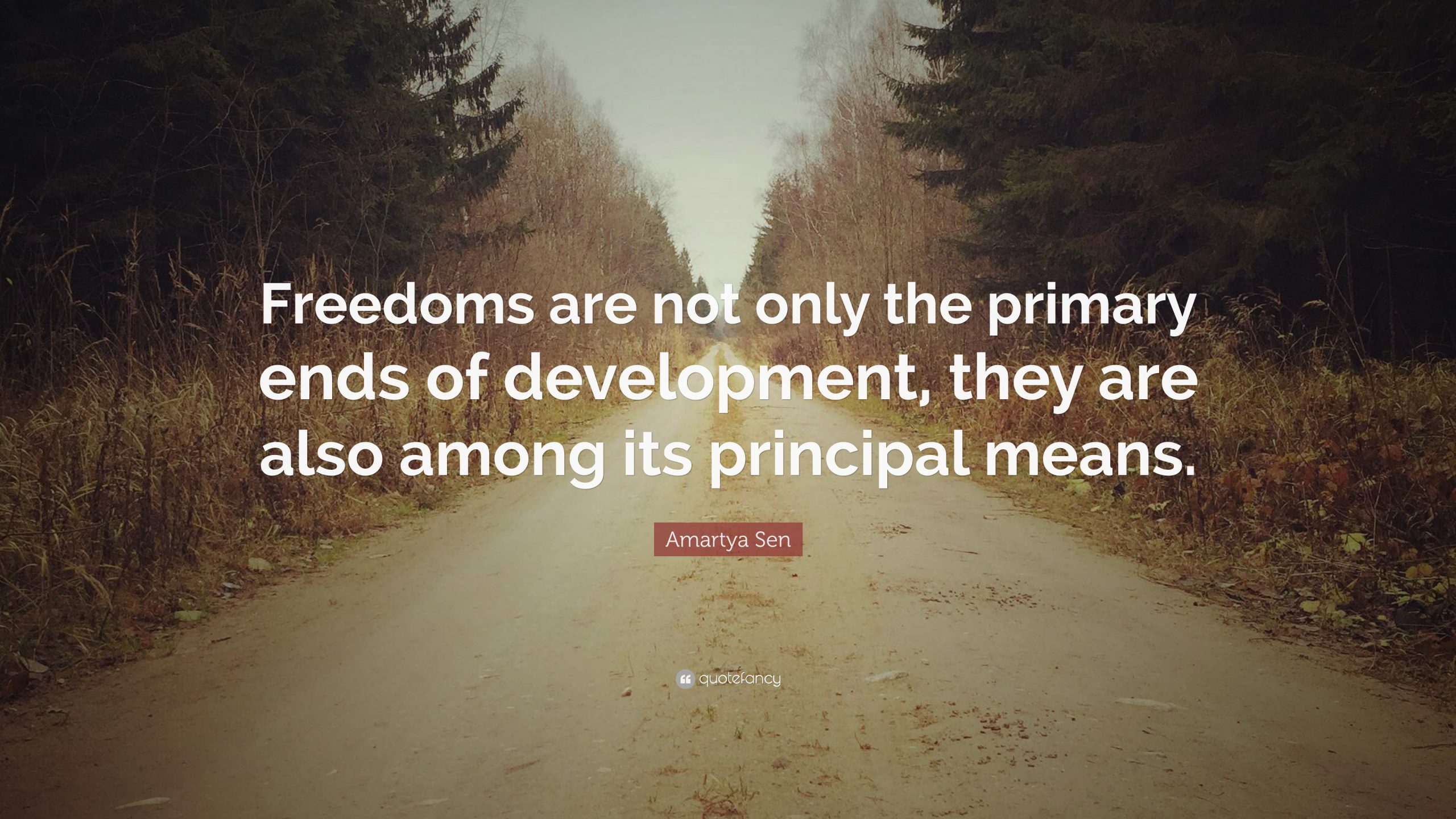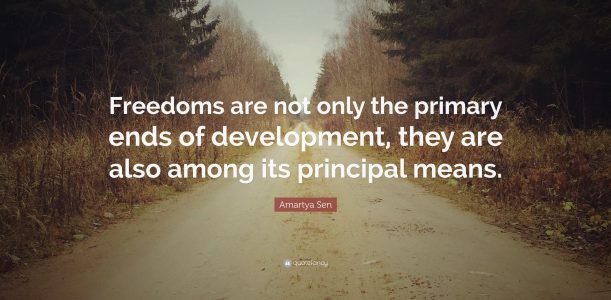Aina, Nina, Rozarina, Sorina and I put together this blog in six weeks. As reflected in the theme that brough us together – i.e. “New Media, Social Movements and Development” – Five4ThePeople is a blog of mostly amateurs exploring the link between new media, development and any types of activism we were drawn to write about. Our understanding of these three concepts was anything but uniform. Perhaps because it perfectly reflects the wide assortment of our themes, the definition of new media Rozarina uses, i.e. “everything that is delivered digitally to you” remains my preferred.
Indeed, topics ranged from digital violence to censorship as a threat to Uganda’s digital economy, to initiatives tackling digital divides such as Proto and its battle against “(local) language barriers”, to the role of digital gaming in bringing about a more equitable future to how digital spaces such as stock image databases reinforce stereotypes about the regions of Africa and South Asia. I blogged about #HairActivism, the #WhatsApper in the Global South and one single activist’s unusual journey from the streets of Bujumbura to heading Amnesty International Canada. In addition, I, together with Nina, co-authored in conversational format a blog post on Leo Fidjeland and Linnea Våglund’s Nonhuman Nonsense Project.
Predictably, social movements were a main Five4ThePeople theme. Perhaps equally unsurprising is how a feminism lens arose as overarching throughout not just our blogposts as it has been noted by my fellow bloggers, but also in most of our peers’ blogs. Looking back at my own blogposts, I see a common thread emerging and, as I will argue in this closing post, this mainly results from my understanding of both development and social movements. What follows is an attempt at summarizing my experience over the last six weeks. I will subsequently highlight challenges encountered and lessons learned during my short but energising journey in the world of bloggers.
On Development
Firstly, my understanding of development mostly draws from Amartya Sen’s 1999 work Development as Freedom and his argument that development is about advancing freedom and removing the conditions of unfreedom. Here, one specificity that comes with applying ICTs to development or ICT4D as noted by Heeks (2017:13 – chapter 1) is that when certain potentials or “affordances” are realised, they are “very similar to Amartya Sen’s notion of potential capabilities and realised functionings.” It is important to note that this remains true whether achieved by an individual or an organisation. And as I noted in my second blog on the WhatsApper, information as an affordance made possible by ICT4D applications only has value when it feeds in the “DAR” or decision-action-result steps of Heeks’ CIPSODAR value chain (adapted from Lucey 2005 and Laudon & Laudon 2016). In short, the model is a summary of details involved when data is processed into information and information into knowledge. An information system’s core part consists of the CIPSO steps whereas the second part is made of DAR steps:
Capture (data is first gathered from its source), Input (data is entered into the information system), Process (data is manipulated by categorising it, or filtering it, or totalling it, or performing some other calculation on it), Store (data is held in the information system), and Output (processed data is communicated to a recipient). […] “DAR” steps: Decision (the recipient makes a decision on the basis of the information received), Action (some action is taken on the basis of that decision), and Result (this action has some impact on development).
CIPSODAR value chain by Heeks (2017, adapted from Lucey 2005 and Laudon & Laudon 2016)
Heeks’ (2017:7, 8) emphasis here is that, although the process of turning information first into decisions and secondly into actions before results are borne may take time, this is the stage that impacts development and, importantly, that builds one’s “frameworks of knowledge”. Knowledge is therefore “never consumed in a vacuum” and I would like to add to Heeks statement that knowledge never exists in a vacuum.
Take for instance Fidjeland and Våglund’s planetary personhood project which, by seeking citizenship for “Allan Hills 84001” or rock 84001 who or that arrived on Earth some 13,000 years ago, challenges our human systems of categorization and the institutions that classify between “beings with rights” on the one hand and “objects as property” on the other. During our virtual conversation, Nina and I have pondered the question of whether the initiative can be read as constitutive of one or more larger social movements. Nina who introduced me to the project and with whom I cowrite on the topic makes the observation that the choice to grant Allan Hills 84001 an EU (Swedish) passport may not be happenstance. I cannot help but wonder if – whether consciously or not – this done as a way to link the project to social and/or ecological movements such as #RefugeesWelcome, #LeaveNoOneBehind and #NoWallsNoBorders and therefore further highlight how nonsensical it is to separate the nonhuman from the human. Fidjeland and Våglund ask more questions than they offer answers. Theirs seems a humble project aiming at provoking self-reflection; at least that is how I understand it. Concurrently, I am reminded of the designation of “movement society” and of Della Porta and Diani’s (2006) suggestion that we might be living in one. In any case, whether for the benefit of humans or #NonHumansNonSense, it could be argued that freedom is central to these movements.
On Social Movements
Secondly, I often went back to the following definition of social movements during this period:
Social movements can be viewed as collective enterprises seeking to establish a new order of life. They have their inception in a condition of unrest, and derive their move power on one hand from dissatisfaction with the current form of life, and on the other hand, from wishes and hopes for a new system of living. The career of social movement depicts the emergence of a new order of life.
Bulmer’s (1969, qtd. in Crossley 2002:3)
What sparks my interest here is the linking of the “collective enterprise” to the “condition of unrest”. While I do not dismiss the possibility of a shared discomfort, uneasiness or discontent, I would posit that such sentiments begin and end at the level of the individual. Going back to Amartya Sen (2000: xii, qtd. in Corbridge 2006:232), the depiction of “various types of unfreedoms that leave people with little opportunity of exercising their reasoned agency” drives this point home. It is true that social movements are collective enterprises and unrest at society level is caused by various types of unfreedoms. Ultimately, however, freedom is a very individual concept in that exercising the reasoned agency these unfreedoms impede can hardly be limited to the setting of a group.
This could be said about the freedom an activist such as Ketty Nivyabandi and her peers experienced in taking to the streets of Bujumbura in order to defend Burundi’s constitution against violation in 2015. The collective is illustrated by Ketty’s and her peers’ decision not to let one President and his political party risk the peace Burundians had “so much worked towards” as well as in their shared status as women in a society where female voices are not often heard publicly. The individual would be the various, practical ways in which their dissatisfaction and that of the mostly young protestors that also took to the street was manifest every day prior to the 2015 #BurundiCrisis. My fourth blog post may have zoomed in on one woman’s “active citizenship”, but women’s agency or lack thereof remains undeniably relevant if a new order of life is to emerge in Burundi. It would not be far-fetched to state that the cries of Burundian women before, during and after the 2015 uprising find echo in Sen’s important account of gender discrimination or “capability deprivation of women” (Corbridge 2006:233).
A comparable situation would be the newly-found freedom naturalistas or #HairActivists experience thanks to YouTubers or Vloggers. Rather than following mainstream, straight hair conventions, these mostly Black women find it in themselves to wear their nappy hair as they please, not so much because “hair is political” as many have posited, but for their own freedom and self-development. Nonetheless, it is the “safe places” – the digital spaces (and their offline ramifications) where they can adequately resist hegemonic patriarchal values as well as stereotypes on Black womanhood – that afforded them the freedom of an act as trivial as wearing one’s hair precisely the way one wants to.
In conclusion, it seems fitting to highlight that “reclamation of autonomous spaces, rather than material advantages” is a distinctive innovation brought about by new social movements (Della Porta and Diani, 2006:10). The same authors have warned against viewing actors in global movements as homogeneous or unitary. The common thread throughout my four contributions to this blog is that new social movements appear to be more about freedom for each participant to uniquely achieve their capabilities than about units grouped around some shared aspiration.
Challenges Encountered and Lessons Learnt
Lastly, an absolutely unexpected was to turn off my academic register in order to communicate in simple but clear terms. Since coming back to university four years ago, I have purposefully sought to write in a stricter, more formal manner. This has led me to sometimes writing incomprehensible papers, even to myself. The fact that I feel more comfortable getting my voice out may not be solely credited to this blogging exercise, but the process has definitely been liberating. Admittedly, this does not come as a surprise and I decided right at the start of the series of blog posts that having fun would be my number one goal. I am happy to report that I have successfully achieved this particular goal.
Another challenge was writing what felt like an enormous amount of text in such little time. I now better appreciate that 1) blogging comes in more formats than one and 2) many of my peers taking this module knew that. Let us just say that I am wiser than I then were. Would I blog again? Definitely! Would I strive to write shorter blog posts? Yes. Would I succeed? I highly doubt I would. A useful way to handle the situation and keep my sanity was to relate the heavy workload to a real work situation with deadlines that may be or may not be met. In this respect, I have appreciated the approachability and flexibility shown by ComDev’s teaching body.
The last but certainly not least invaluable lesson has been how effective group collaboration proved to be – when done right. As it is often the case, the group dynamics were challenging at first. Looking back, I would even go as far as saying that, albeit unconsciously, some of us were walking on egg shells during our first Zoom call. At our last call however, one of us expressed how she had never been in such a stress-free peer group and we all echoed her sentiments. Thank you, Aina, Nina, Rozarina and Sorina! I could not better companions in starting my journey as a blogger. I hope we meet again.
Wordcount: 1,850 words
References
Corbridge S. (2006). Amartya Kumar Sen (1933-), pp. 230–235. In Fifty Key Thinkers on Development. Edited by David Simon. Routledge: Oxon, UK and NY.
Crossley, N. (2002). Making Sense of Social Movements. Philadelphia: Open University Press
Della Porta, D. and Diani, M. (2006). Social Movements – An Introduction. (2nd Ed.) Blackwell Publishing.
Heeks, R. (2017). Information and Communication Technology for Development (ICT4D), Taylor & Francis Group.


